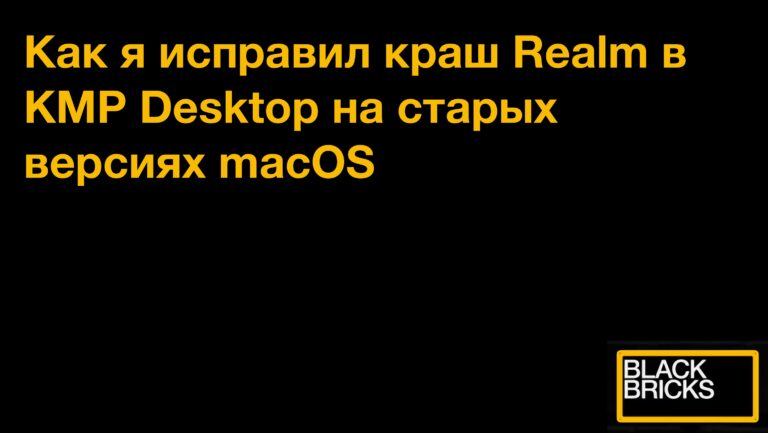Is it worth building a computer on old Intel Xeons in 2024?
Today, computer hardware is at the peak of its value. This situation has arisen for a number of reasons. On the one hand, in the early 2020s, a technological process race began between the largest chip developers. This complicated the production of components, making their cost higher. On the other hand, since 2022, many imported goods are imported into Russia through intermediary countries, which is reflected in the cost.
Thus, in 2024 we have budget gaming assemblies on modern hardware for 60 thousand rubles, and for 100 today you can assemble something relatively powerful, but without a reserve for the future… Therefore, it is not surprising that cheap alternatives have become especially in demand. And the most popular of them is a platform based on decommissioned Intel Xeon server processors.
In this article, we will try to understand what Xeon is and why it is good, as well as for whom assemblies based on it will be relevant in 2024. Or are there better options? Next – in order.
Features of Intel Xeon and which old models are popular in 2024

Intel has always positioned Xeon as server processors, with an emphasis on fault tolerance and scalability. Unlike the first Pentium and Core, they were never designed for use in home computers, especially gaming ones.
This is why most Xeon-branded CPUs have a low frequency per core with a large number of cores. At the same time, many ordinary user tasks – especially games – require high performance per core, and multithreading is not so important. And instead of 12–16 weak cores, modern games would rather have 6–8, but powerful ones, with a high frequency.
Then why did Intel Xeons still become popular, even for gaming builds? The main reason is the price. For example, the old model E5-2667 v2 today is sold for only a couple of thousand rubles. At the same time, it has an 8-core and 16-thread formula with a frequency of up to 4 gigahertz and supports relatively current DDR4 memory.
At first glance, such a processor seems like a fabulous benefit. Whether this is actually true will be discussed further, but for now here is a selection of several popular old Intel Xeons in 2024:
Xeon E3-1270 v2. An analogue of the first generation Core i7 with a 4/8 streaming formula. Only supports DDR3 memory. It features a relatively high frequency of 3.7 GHz for all cores. Runs on LGA-1155 socket. Average price on Aliexpress: $35.
Xeon E5-2667 v2. One of the most popular old processors for gaming PCs. Designed according to the formula of 8 physical cores and 16 common threads operating at a frequency of 3.6 GHz. Supports DDR4 and has an extended cache of 25 MB. Due to its high power consumption (from 130 W), it is demanding on the cooling system and the equipment of the motherboard. Powered by LGA 2011 socket. Average price on Aliexpress: $20.
Xeon E5-2687W v4. Processor with the formula 12 cores / 24 threads at a frequency of 3.6 GHz. It performs well in heavy graphical applications and tasks that are well parallelized across threads. It supports DDR4, and it has a little more cache than the previous version – 30 MB. Power consumption is also higher than that of the E5-2667 v2 (from 160 W). Runs on LGA 2011-3 socket. Average price on Aliexpress: $65.
What are the alternatives to the old Intel Xeons in 2024?
If you look at the price only for the processor, then nothing. Often old Intel Xeons are sold together with the motherboard and RAM. Such a kit often costs less than 10 thousand rubles. Here, too, it is difficult to find an alternative for a similar amount: analog platforms on Intel Core will cost two to three times more, and on AMD Ryzen – one and a half to two times more.
However, in the last couple of years, so-called mutant processors have begun to gain popularity. These are engineering versions of laptop CPUs, equipped with an adapter for installation in a desktop socket. Largely due to the fact that these are also decommissioned copies, their price is low.
In terms of price and performance, today the most interesting models are those for the LGA-1151 socket. Their approximate price range: from 40 to 100 dollars. Consumer CPUs for this socket included Intel Core 6000 (Skylake) and 7000 (Kaby Lake) series. And many “mutants” in terms of flow formula and characteristics are closer to the 10,000th series (Comet Lake)! Below are a few popular models in 2024:
QL2X (engineering version of i7-7820HK). It is positioned as an analogue of the desktop i3-10100 with a 4/8 formula at a frequency of 3.4 GHz for all cores. Claimed power consumption is 45 W. It can be overclocked to 4.4 GHz, but the TDP will approximately double. Average price on Aliexpress: $50.
QTJ2 (i7-10750H). An analogue of the Core i5-10400 with a 6/12 formula at a frequency of 4000 MHz for all cores. Power consumption is only 45 W, but without overclocking. With overclocking to 5.0 GHz it can increase to 150! Average price on Aliexpress: $85.
QTJ1 (i9-10980HK). An analogue of the Core i9-9900K with the formula 8/16 at a frequency of 4200 MHz for all cores. Power consumption is the same 45 W, but also without overclocking. Overclocking to 5.0 GHz will increase to approximately 150 W. Average price on Aliexpress: $70.
How do Xeons and “mutants” perform in games and work tasks?

We studied many independent tests and came to the conclusion that the old Xeon E3 and E5 lines perform well only in office work and multi-threaded computing in specialized software, and are somewhat less suitable for games. As mentioned above, modern 3D entertainment projects rarely need more than 6 cores, so high performance per core is more valuable. Popular decommissioned Xeons can rarely fully load a video card more powerful than the GeForce RTX 3060 with work.
“Mutants” are a completely different matter. In essence, these are engineering versions of powerful laptop processors from 2018–20. Such processors cost one and a half times more than the old Xeon E5, but they have significantly higher single-threaded performance. The latter is exactly what games need. However, the fault tolerance of such hybrid designs is probably much lower. After all, they consist of a soldered-out laptop chipset with a homemade adapter for a desktop motherboard.
Below is a summary of the tests of old Xeons and “mutants” for the LGA-1151 socket:
Xeon E3-1270 v2. It averages 678 points in the single-threaded Geekbench test and 2345 points in the multi-threaded test. The results are similar to the desktop Core i7-3770K.
Xeon E5-2667 v2. On average it scores 647 points in a single-threaded test and 4000 in a multi-threaded test. The closest desktop analogue is Core i7-4790K. Its 8 threads perform roughly on par with the 16 threads of the E5-2667 v2.
Xeon E5-2687W v4. On average, it scores 1114 points in a single-threaded test and 7816 in a multi-threaded test. The results are close to the desktop Core i7-9700. The latter has 16 threads, and the E5-2687W v4 has 24.
“Mutant” QL2X. On average, it scores 1268 points in the single-threaded Geekbench test and 4150 in the multi-threaded test. This is approximately the level of the i7-4790K. And even the i3-10100 is actually faster.
“Mutant” QTJ2. On average it scores 1452 points in a single-threaded test and 5347 in a multi-threaded test. The results are similar to the i7-7700K rather than the i7-8700K.
“Mutant” QTJ1. On average, it scores 1680 points in a single-threaded test and 7200 in a multi-threaded test. Here a close analogue is the above-mentioned i7-8700K. Today the i5-11400 performs at approximately the same level.
To sum up, Intel Xeons are more suitable for budget builds for work or undemanding online games (what's up, World of Tanks?). For “graphic” entertainment projects, it is better to prefer an alternative. But we would not recommend buying “mutants” – they turned out to be not so productive, and their design raises doubts about reliability. Therefore, next we will try to understand how much you can save when building on old Xeons instead of current budget platforms.
Comparison of the cost of old Intel Xeon and current budget platforms

Budget build on an old Intel Xeon
Prices are valid at the end of August 2024.
As you can see, although the platform itself cost about 12 thousand rubles, the remaining components will require about 40 thousand more on top.
One of the most affordable alternatives today is a platform based on the younger AMD Ryzen 3 4100. It offers noticeably higher performance in games:
Budget build on current AMD Ryzen 3
Prices are valid at the end of August 2024.
It turns out that the price difference between the assembly on the old Intel Xeon and the current AMD Ryzen 3 is 8,875 rubles, which is about 17% more expensive. However, let's also consider the difference with the relatively current Intel Core i3.
The performance of modern Intel Core i3 processors can compete with older Intel Core i5 models and the retired Intel Xeon E5 line. This makes them a great choice for budget gaming and workstations.
Budget build on current Intel Core i3
Prices are valid at the end of August 2024.
Thus, the difference in cost between the assembly on the old Intel Xeon and the current Intel Core i3 is 13,470 rubles, which is about 25% more expensive.
Conclusion
Building PCs on older Intel Xeons can really be beneficial for budget workstations or low-demand gaming PCs. These processors offer decent multi-threaded performance and low cost, making them attractive on a budget. However, there are a few important points to consider.
Firstly, old Xeons (E3-1270 v2, E5-2667 v2, E5-2687W v4, etc.) have low performance per core. This makes them unsuitable for current blockbuster games. Secondly, such CPUs are not able to fully unleash the potential of modern video cards, which leads to a lack of FPS. Third, server processors often require specific motherboards and cooling systems, which can complicate assembly and increase its cost. Fortunately, buying a ready-made kit simplifies everything.
If we compare old Xeons with current budget platforms based on AMD Ryzen 3 and Intel Core i3, modern CPUs provide better performance and support for current technologies, as well as the ability to effectively upgrade in the future. What is more important to you – maximum savings or the relevance of components – decide for yourself.





